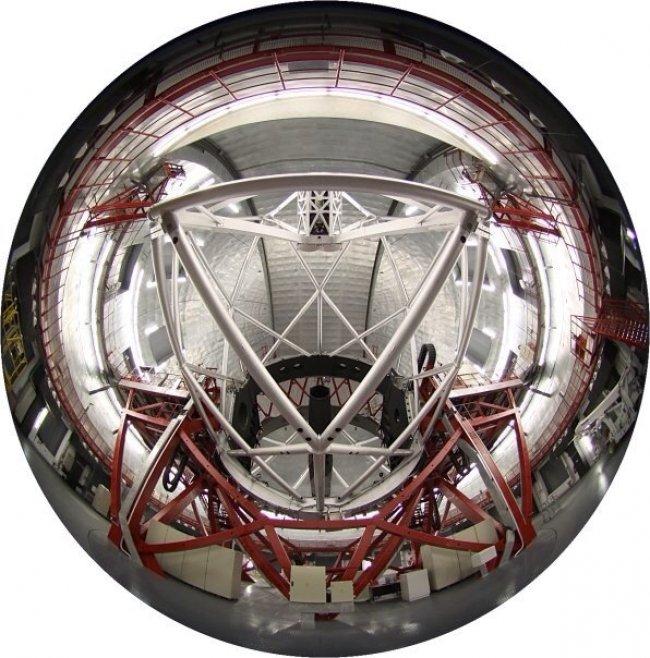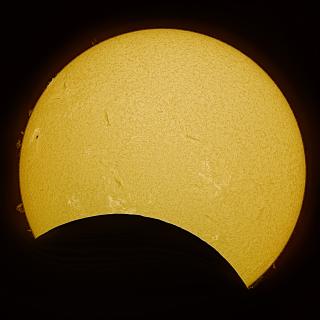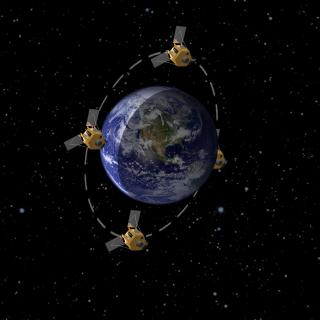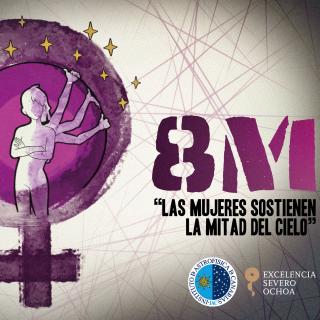On the third and final day of the conference technology took a major role, without forgetting the science which it will allow us to do. In one of the first presentations, David Hughes (Instituto Nacional de Astrofísica, Óptica y Electrónica de México, INAOE) explained the main features of the Large Millimeter Telescope (LMT), which is situated in Mexico, dealing principally with the important collaborative work which could be carried out with the GTC with an interchange of observation time.
Let’s run through the instruments, in order of their installation on the GTC. OSIRIS, a multi-purpose optical instrument, was the first to be operative on the telescope (since 2009), and for that reason it has produced the majority of the results, as was clear from the scientific presentation at the conference. It is also the instrument with the highest demand from the research community. Once the initial adjustments had been made, during the first year, it has worked very well. There are over 200 articles, published or submitted, which use data from this instrument, as was described by its PI Jordi Cepa (Instituto de Astrofísica de Canarias, IAC). Its versatility makes it useful in a wide range of astrophysical research, and its success was one of the main news items of the conference.
After OSIRIS came CanariCam, which works in the middle infrared and is unique in the world in observing in this range from the ground. It is ideal for finding cool objects in the universe. It detects thermal radiation, radiation emitted from any object due to its own heat, and from this we can infer the properties such as the temperature, composition, mass... It is the instrument on the GTC working at the longest wavelength. Its PI, Charles Telesco (University of Florida, UF), explained that CanariCam enables us to detect the structure of the magnetic fields throughout the universe, which are “invisible”. It is the only instrument on the GTC which can do this. The technique, which uses polarization, uses those properties of light which are affected by the magnetic field. Magnetic fields apply a force to matter, without touching it, and thereby control the motions of collapsed stars, the rotation of gas and dust, and the formation of planets, so that they control the evolution of these objects. CanariCam has been producing science since 2012. Telesco said that the most exciting results from CanariCam were from the supernova which exploded in the galaxy M82 in 2014. They show how certain chemical elements were thrown out into space.
EMIR is in the spotlight at the moment, because it will very soon been installed on the GTC. It should arrive in 2016 and start to work around mid-year. It will produce images and spectra in the near infrared, which will enable us to observe cooler and more distant objects in the universe. It will, like OSIRIS, be a multi-purpose instrument. Hopefully it will produce very important results in Galactic and Extragalactic physics. The kind of observations made in the optical by OSIRIS of the Local Group of galaxies EMIR will be able to do for their precursors because it can look back further in time and reach the early universe. It is technically a very complex instrument, which accounts for the length of time needed for its development, more than a decade. To start with it is totally cryogenic, it is enclosed in a tank at two hundred degrees below zero Celsius, and in those conditions its components must work to a precision of a few microns. It has several operational modes, which makes it very versatile and powerful, but increases the difficulties in coordinating it with the telescope, which could lengthen its commissioning period once it has been installed. Paco Garzón (IAC) the PI on the project explained that “It is an instrument which uses novel observing techniques, with high precision mechanisms which give it great versatility, on the biggest telescope in the world. The sum of these factors will make it a very powerful instrument."
MEGARA is a spectrograph which does not take images. It will have unique capabilities to resolve light into its components. Armando Gil de Paz (Universidad Complutense de Madrid, UCM), the PI on this instrument said that “Normally this type of instruments covers only a small narrow strip on the sky, (a spectrograph slit) but MEGARA will cover an extended zone on the sky”. MEGARA will let us measure the movements of the stars and galaxies with unprecedented detail, without compromising the large light-gathering power of the GTC. In practice it will cover the need for high resolution in the optical which OSIRIS does not have. MEGARA, which is now under construction, will arrive at the GTC at the end of 2016.
To see faint objects the size of a telescope is important, and the GTC is the biggest telescope in the world. If you can also eliminate the effects of atmospheric turbulence those objects could be seen in great detail. This is the aim of adaptive optics: it “cleans” the image from the distortion generated by the atmosphere. FRIDA, is an instrument in the near infrared which incorporates this technique. It will perform imaging and spectroscopy over an integral field. It will yield high image quality, explained Alan Watson (Instituto de Astronomía de la Universidad Nacional Autónoma de México, IA-UNAM), the PI on FRIDA. The difference between FRIDA and the other instruments on the GTC is that this will image faint objects with finer detail. FRIDA will allow studies of individual objects, which makes it complementary to some of the other instruments. It is designed to rise to the challenge of many lines of research, among which we may pick out the study of brown dwarfs, of gas around dying stars, and of protoplanetary nebulae. It will also study stellar astrophysics close to the Galactic center, where there are many stars. With an instrument of lower angular resolution these studies could not be carried out, but with FRIDA they will become possible. FRIDA is planned for installation on the GTC in 2019.
Steve Eikenberry, (University of Florida, UF) said that MIRADAS, of which he is the PI, will start to make scientific measurements in 2019. This near infrared spectrograph has multiple objectives: to study the massive stars in our own Galaxy, to help determine how the black hole in the centre of the Milky Way was formed, to obtain better measurements of small galaxies at high redshift, looking backwards in time. To summarize, to study how objects formed and how they move. Ekenberry picked out one field of research, the capacity to measure magnetic fields in stars like our Sun. This is very important to help us to understand solar activity, which has a big influence on our lives. We don’t know at all whether the Sun is behaving normally at the present time, or not. Studying different stars could help us to know this, and to see, for example, what is the frequency of the Maunder minimum phenomenon. MIRADAS will have a much higher resolution than EMIR which makes them complementary instruments.
At the present time the GTC has two visitor instruments: CIRCE and HORS. CIRCE has been in operation for several months, and it is hope that it will remain operational for two or three years. It observes in the near infrared, and takes images at wavelengths a little longer than those of visible light, so that it can observed objects outside the range of OSIRIS. It takes narrow band images with high resolution and high speed. CIRCE can “cut through” the dark zones of the Galaxy and penetrate further into objects that CanariCam (operating in the middle infrared). Its PI Steve Eikenberry (UF) told the conference that CIRCE is the only instrument, either on the ground or in space, which detected the faintest gamma ray burst ever discovered, a point of light in the infrared, the afterglow. This was possible because the instrument is quick enough and the telescope was big enough, and works in the infrared. EMIR and CIRCE will work in collaboration.
HORS, the second visitor instrument, is in the commissioning phase on the GTC as the PI, Ramón García López (IAC), explained to us. It is a high resolution optical spectrograph for point sources which uses the acquisition and guiding facilities of OSIRIS.
The day finished with a “wish list”: the members of the astronomical community told the conference what they wanted from the GTC in the future.
The V International Conference "Science with the GTC" is organized by the Instituto Nacional de Astrofísica, Óptica y Electrónica de México (INAOE) and the Instituto de Astronomía of the Universidad Nacional Autónoma de México (IA-UNAM), with participation by the Instituto de Astrofísica de Canarias (IAC) and the University of Florida (UF).
The GTC is the result of an international collaboration between Spain (IAC), Mexico (IA-UNAM and INAOE) and the United States (UF).
Annia Domènech
More information
Website of the V International Conference “Science with GTC”
The 5th International Conference on “Science with the GTC” starts tomorrow
Press contact
Annia Domènech
annia [at] iac.es (annia[at]iac[dot]es)



